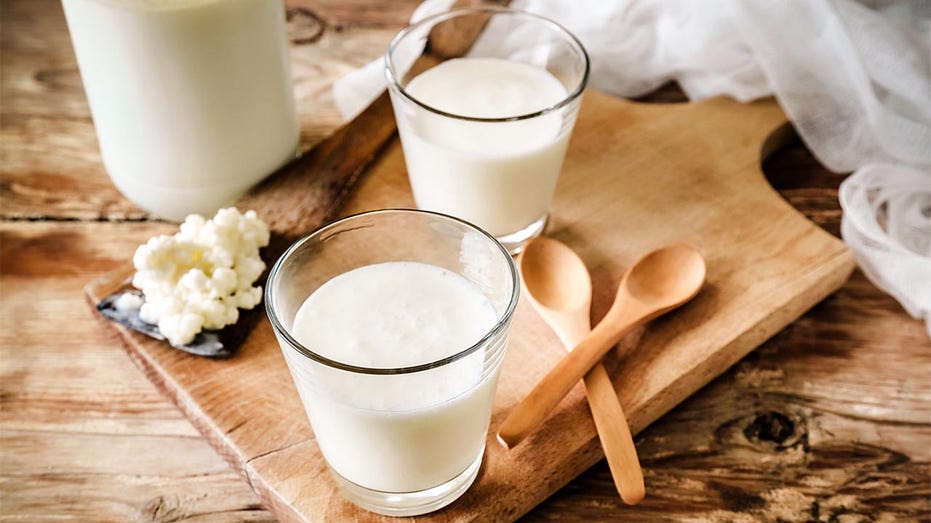Drinking raw milk caused Campylobacter infectious outbreak in Utah: What to know about the illness
Fourteen people in Salt Lake County, Utah, recently developed campylobacteriosis, a bacterial infection; most drank raw milk. Here's what to know about the outbreak and how to prevent it.

The Salt Lake County Health Department is urging people to only drink pasteurized milk after discovering an outbreak from the diarrheal bacterial infection known as campylobacteriosis developed after people drank raw milk.
"Campylobacter infection is caused by a foodborne bacteria that we don’t hear much about but is actually a very common bacterial illness and there have been outbreaks from multiple sources," Dr. Katherine Baumgarten, medical director for infection control and prevention at Ochsner Health based in New Orleans, Louisiana, told Fox News Digital.
Ten people in Salt Lake County developed campylobacteriosis, which is caused by the bacteria Campylobacter, the report noted.
FDA PROPOSES PLANT-BASED, DAIRY-FREE MILK CAN BE CALLED ‘MILK’ AND ASKS FOR PUBLIC FEEDBACK
Eight of these 10 people drank raw milk before they became ill.
The department discovered four additional cases in other parts of the state; all four people drank raw milk before they developed campylobacteriosis.
The source of the raw milk is under investigation.
The 14 people to date who developed the bacterial infection ranged from ages 2 to 73 years old, with one initially hospitalized; that person is now recovering at home.
"‘Raw’ milk is milk from cows, goats or sheep that has not been pasteurized to kill harmful bacteria," the report noted.
A cow’s milk becomes contaminated when it’s infected with a Campylobacter infection in its udder or when its milk is contaminated with manure, according to the Centers for Disease Control and Prevention (CDC).
The raw milk may also contain other dangerous bacteria that can cause foodborne illnesses, such as Salmonella, Listeria and E. coli, the report added.
It’s not easy to tell raw milk with disease-causing bacteria from uncontaminated raw milk because the contaminated milk does not smell or appear any different from uncontaminated raw milk.
Raw milk or raw milk products can only be sold in Utah directly to the consumer from 16 farms in the state that are currently licensed by the Utah Department of Agriculture and Food, three which are in Salt Lake County.
But grocery stores in the state only can sell pasteurized dairy products.
Raw milk and raw milk products should not sit at room temperature.
People who drink raw milk or raw milk products should decrease their chance of illness by first heating raw milk to 165 degrees Fahrenheit for at least 15 seconds, then cool it before consuming it, the report said.
TWENTY-SIX SICKENED IN 11 STATES IN SALMONELLA OUTBREAK LINKED TO SMALL TURTLES: CDC
Raw milk and raw milk products should also be refrigerated at or below 40 degrees Fahrenheit.
Utah has had 25 documented outbreaks of Campylobacter infection associated with raw milk consumption since 2009, resulting in nearly 300 people becoming ill, according to various sources.
Campylobacter is the most common cause of a diarrheal illness caused by a bacterium in the U.S., according to the CDC.
"Although many cases go undiagnosed, the CDC estimates Campylobacter affects about 1.5 million people in the U.S. each year," Baumgarten of New Orleans said.
"Most commonly, Campylobacter infection, or campylobacteriosis, is caused by consuming or mishandling raw or undercooked poultry, but it can also be obtained from other food sources like seafood, meat, produce or by drinking untreated water or raw, unpasteurized milk."
The National Antimicrobial Resistance Monitoring System found the bacteria on 24% of raw chicken bought from retailers in 2015.
"A single drop of juice from raw chicken can contain enough bacteria to infect someone," the CDC added on its website.
FOOD POISONING RECENTLY? SICK RESTAURANT WORKERS MIGHT BE TO BLAME, SAYS CDC
The disease generally does not spread from one person to another, per the CDC.
More cases occur in the summer compared to the winter — and it only takes a small amount of Campylobacter bacteria to cause someone to get sick.
"People who have recently consumed raw milk or raw milk products and are experiencing any of these symptoms should contact their health care provider," the report reminded.
People often get sick two to five days after getting infected with the bacteria.
"Symptoms of a Campylobacter infection include diarrhea, fever and often GI upset, like nausea and vomiting," Baumgarten said.
"An infection typically lasts about a week and can be diagnosed using lab testing."
While most people recover on their own, some require antibiotics for the infection to resolve, she added.
People may also sometimes develop complications, like irritable bowel syndrome, temporary paralysis and arthritis, according to the CDC.
CLICK HERE TO SIGN UP FOR OUR HEALTH NEWSLETTER
People who are immunocompromised, such as those who are receiving chemotherapy or have AIDS, may develop life-threatening infections where the bacteria enter the bloodstream, per the CDC.
"It is also important for anyone with Campylobacter infection or other illnesses causing severe diarrhea or other GI symptoms to drink extra fluids while symptoms remain to protect from dehydration," Baumgarten recommended.
"To prevent infections such as Campylobacteriosis, always ensure raw chicken does not come in contact with other foods that are eaten raw and carefully clean surfaces, knives, cutting boards, etc. after handling raw meats."
She noted these precautions are especially important for those at high risk for severe infections — such as those who have a weakened immune system or are pregnant.



